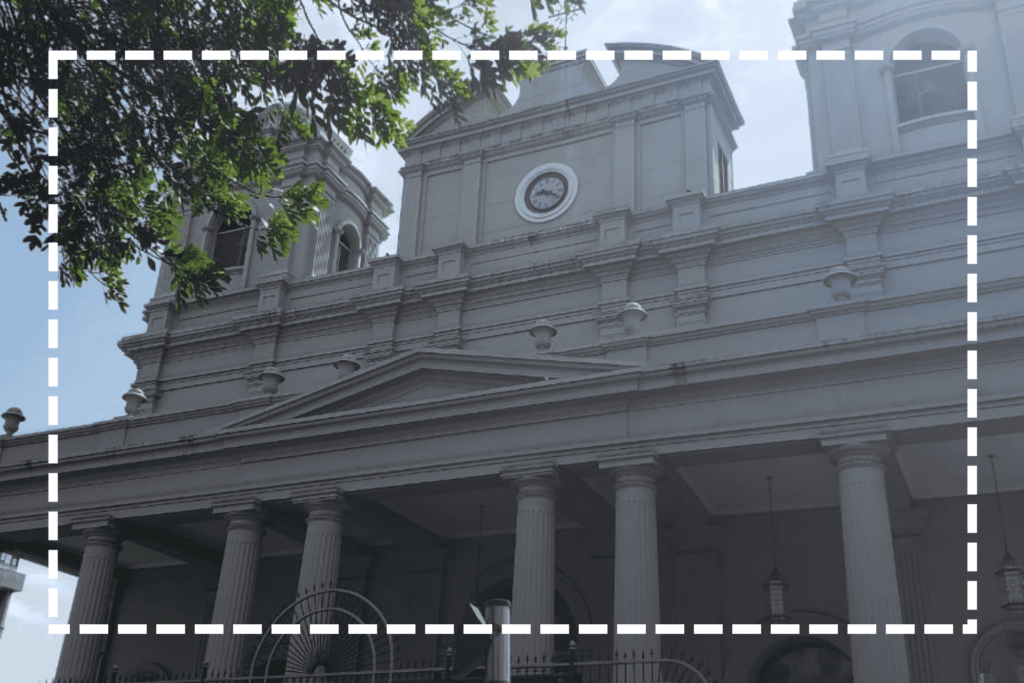Why Do Expats Live in Costa Rica? Life as a Single Female Expat
What is it like to live in Costa Rica for expats?
Four months after moving to Costa Rica, I can assure you that, while it certainly isn’t a cakewalk, moving here has definitely been worth the effort.
A lot of travel blogs and expat websites will cite a low cost of living in Costa Rica, the ease of obtaining residency, the many social benefits that Costa Rica offers to its citizens, and the variety of climates and cities to choose from when you’re trying to pick a place to live, here.
For me, I just really wanted to travel and teach English in a country where I could become fluent in Spanish.
Costa Rica has delivered on all of that, for me.
Pros and Cons of Living in Costa Rica for Expats
If you’re just browsing the Interwebs and the message boards, the amount of information you come across about Costa Rica can be overwhelming, uninspiring, and (worst of all) contradictory.
This is especially true for the capital city of San José.
There are many reasons for this, but what it boils down to is that everybody has different tastes, expectations, and experiences, and what may be one man’s paradise might be another man’s purgatory.
When I moved down here to teach English as a foreign language, I tried to keep my expectations minimal. I knew going into it that this would be a very different country and way of life from what I was accustomed to, and I think that that mindset was beneficial in the long run.
Having low expectations meant that I had fewer disappointments and less stress compared to what some other people might have experienced in my place.
So this is my experience about the pros and cons of living in San José, Costa Rica for the past four months.
(Keep in mind, these are my honest opinions and experiences as a single female expat who has lived in Costa Rica only for the past four months. These circumstances will not apply to everybody, and even I have revised several of my initial opinions since I first got here.)

Pros of Living in Costa Rica as a Single Female Expat
In my honest opinion, some of the pros of living in Costa Rica are the warm and friendly locals, the lower overall cost of living, the year-round warm weather, the variety of microclimates in the country, the excellent food (and even better coffee!), the availability of public transportation, how close everything is, and how safe I generally feel living here.
I also think that having to learn to speak Spanish is a good thing, but that might just be me.
Warm, Friendly Locals
The people here are some of the most warm-hearted people I’ve ever met.
Every time I take an Uber to go to work, there’s always at least one driver who’s more than happy to chat about the local area, my opinions about Costa Rica, what things are like back in the United States, different Costa Rican events and festivals (I’m excited for the Pilgrimage of the Black Mary in August!), their families, and more.
Even just showing an interest in their lives and thoughts is enough to get them smiling, most of the time.
Since I’ve been down here, I’ve hardly ever met a stranger- and for an introvert who’s far more comfortable listening than I am with interacting, that really says something.
Lower Cost of Living
In general, things are less expensive here than they are in the United States. The affordable cost of living means that I can stretch my dollars (or colones!) farther while still being able to live a decent, if basic, lifestyle.
I can get a variety of fresh fruits and vegetables at the same price or much cheaper than I can get them back home.
Housing in Costa Rica is also generally affordable. Depending on where I want to live, I can rent a studio apartment for $490/month, or I can rent a room in a house (with shared spaces) for $280/month. WAY more affordable than the same accommodations would be in my hometown of Missoula, Montana.
You can go into the $1,000-$5,000 range if you really want to, though.
Year-Round Warm Weather and Variety of Microclimates
Costa Rica is renowned for its tropical climate.
In the Central Valley, no matter what time of year it is, temperatures average between 60-85 degrees Fahrenheit. In the mountains, it gets cooler, and it’s always hotter on the beaches.
Rain depends on the time of year. Keep in mind that Costa Rica is a tropical country, though. It’s always humid, so if that isn’t your thing, then this beautiful country might not be for you.

Excellent Food (and Even Better Coffee)
Costa Rica is considered one of the best producers of coffee in the world. Its primarily volcanic soil, good drainage, and variety of microclimates makes for an environment where the Arabica coffee plant flourishes, and although they can’t produce as much coffee as, say, Colombia does, the quality more than makes up for the lower quantity.
The traditional Costa Rican food selection is absolutely delicious. I’m especially fond of making gallo pinto (stir-fried beans and rice) for breakfast, and you might say I’ve gone a little bananas for fried plantains. (Ba-dum- tsss!)
The food can get a little repetitive after a time, though; the staples of the diet are plantains, rice, and beans, and most traditional cuisines are founded on those three things, here.
There is a lot of variety in how they make it, though, so for me, it hasn’t gotten old quite yet.
(Also, they do have some totally kick-ass ice cream, ngl, and HAVE I MENTIONED THE COFFEE?!?! 🤤)
Availability of Public Transportation
Back home in Montana, it’s the same as what the Sheriff said in Wind River: “Welcome to [Wyoming], where you have to drive fifty miles to go five.”
You can’t get anywhere without your own car, back home, simply due to how spread-out everything is.
Here, it’s a completely different story.
Costa Rica is a country with an overall landmass about 5,000 square miles smaller than the state of West Virginia. This means that everything is much closer together.
The Costa Rican government also currently makes an effort to subsidize the public transportation systems, especially the bus system. To get around Costa Rica, most of the time you can rent a car or take a bus somewhere.
The best (even if not the most efficient) way to get around Costa Rica is the bus transportation system. The fares are inexpensive, the rides are regular, and if you use the right apps and ask the right questions, you’ll quickly find that this is one of the most economical options available to you.
Driving in Costa Rica is often hazardous, however, so exercise caution if you end up buying or renting a car. Also, your United States driver’s license is only good for 90 days after you arrive in the country, after which you will either have to leave the country for 72 hours and then return, or get a Costa Rican driver’s license.
Which, of course, is its own adventure.

I Feel Safe Living Here
…And, unlike most people who say that, it’s not because Costa Rica abolished its standing army in 1948.
I spent most of my childhood living in the suburbs of St. Louis, Missouri. If I went to certain parts of that city, I was likely to get leered at, mugged, or otherwise threatened with bodily harm or harassment due to reasons I’ll not name. Had I grown up in Detroit or Chicago, it would have been even worse.
Out of all the countries in Latin America, Costa Rica is generally one of the safest places to be. Even with all the stereotypes that we are bombarded with about Central America and all the negative things that the American media spouts about this beautiful region of the world, I feel safer here than I ever would in some of the big cities back home.
Thanks to Costa Rica’s tourism economy, they’re generally very welcoming of foreigners- especially if you make an attempt to speak Spanish with them (even if it isn’t perfect!). They’re also very protective of that tourism economy, so they make an effort to make tourist areas safer.
That being said, it’s far from perfect, so I still exercise the same common-sense cautions here that I would back home.
Basic, Common-sense Safety Tips for Living in Costa Rica
- Don’t walk alone at night.
- Always walk with purpose and try to look like you’re going somewhere.
- Carry a small self-defense tool if necessary.
- Don’t go anywhere with a stranger. (Basic safety, right?)
- Never accept a drink from a stranger.
- Never do party drugs; people have died because of that.
- Don’t wear flashy, expensive accessories or jewelry.
- Dress modestly.
- Don’t leave your bags or possessions unattended when you’re out and about.
- Be careful with your wallet.
- If you carry a purse, don’t leave it unattended.
- Carry your wallet in your front pocket, not your back pocket.
- Be careful about flashing your technology.
- If you’re walking alone during the day, keep an eye on your shadow and your reflection in surrounding windows; this will help you see if someone is coming up behind you where you can’t see them.
While I’ve never had anybody even look twice at me for pulling out my smartphone, it IS an older model Samsung Galaxy Note 9, so maybe its age has made it less noticeable than it would be if I were flashing around an iPad Pro or the latest model of iPhone or Samsung Galaxy.
Most people down here have smartphones of some kind, and they use wireless headphones just like we do up in the States. I have never felt uncomfortable taking out my smartphone while on the bus or bringing my laptop to the local café to work.
There are certain areas you wouldn’t want to do that in, however.
Parts of Costa rica to avoid
Parts of Costa Rica aren’t considered safe, even for locals. Avoid certain known areas where crime, trafficking, drug use, and vagrancy are high. These are:
- El Infiernillo (Santa Rita area of Alajuela)
- León XIII, Tibás, San José
- Los Guido, Desamparados, San José
- La Carpioé
- The old Coca-Cola building downtown
- (This is apparently a known black market area that I found out about from my TEENAGE ENGLISH STUDENTS. OMG I’M TEACHING A BUNCH OF DELINQUENTS.)
- Limón City in general
- La Cieneguita, Limón City (the port area)
- El Carmen neighborhood in Cartago (the former capital of Costa Rica)
- Although, to be honest, this area isn’t too bad during the daytime, and I’ve walked through it alone several times without a problem
- Santa Rosa de Pocosol, San Carlos, Alajuela (near the border with Nicaragua)
- Puntarenas City, Puntarenas
Learn Some Spanish
Costa Rica is Spanish. It’s a Spanish-speaking country. Not English.
While a growing number of Ticos (a local nickname for a Costa Rican) have some level of English fluency, these abilities vary widely between individuals. I’ve met Costa Ricans who spoke English better than I did, and I’ve also met people who couldn’t speak a word of it if they wanted to.
So, if you plan on living for any length of time in Costa Rica without any major hassle, it’s best to know at least a little Spanish, and to practice constantly once you’re here so that you can improve your fluency.
Every local I have ever spoken with has admired the fact that I speak even a little conversational Spanish, even if I have to pause frequently to look up words, or speak in a roundabout manner because I don’t know exactly how to express myself. It’s the effort that counts, and they love that I even try.
In fact, they’re even friendlier when I admit that my Spanish isn’t perfect and that I’m learning!
It’s one of the most heartwarming things I love about living in Costa Rica full-time.
Cons of Living in Costa Rica as a Single Female Expat
Those are the pros, but some of the cons I’ve encountered of living in Costa Rica in 2024 include higher living costs compared to other countries in Latin America, high levels of vagrancy and drug abuse, surprising amounts of garbage in the gutters, high taxes, high tariffs on imported goods, the lack of a good mail delivery system, the bureaucracy generally associated with socialism, the mañana mentality, and the difficulty of finding certain items compared to how it is back home.
The last four of these can, of course, add to the adventure, and some people prefer these ways of doing things, but for me, these are not my favorite parts of the pura vida lifestyle.
Higher Living Costs compared to other Latin American Countries
Compared to the United States, the United Kingdom, Australia, and (Heaven help them) the Scandinavian countries, the cost of living and beautiful climate here is much more doable than it would be back home.
That being said, it’s still much pricier than it would be in, say, Colombia, Argentina, Mexico, Guatemala, or almost any of the other countries in South and Central America.
High levels of vagrancy and drug abuse
While the higher living costs also equate to a higher standard of living for most people, for some people in Costa Rica, this is not the case. San Jose, the capital city and largest city in Costa Rica, has some of the highest levels of vagrancy and drug abuse in the country.
I have never seen so many homeless people sleeping on the streets in one place, before. Perhaps they just blended in more, back in St. Louis; in Missoula, they generally kept to a relatively small part of the downtown area.
Here, it seems like the homeless are everywhere. And this brings with it all the typical problems that come with high levels of vagrancy: poverty, drugs, human waste in the streets, the occasional harassment of passersby, and more.
Still, with Costa Rica’s tropical climate, I suppose it could be easier to be a vagrant here than it would be in bitterly-cold Missoula.

High Taxes
High taxes means that everything is more expensive than it otherwise could be. Costa Rica may be the richest Central American country, but they also have some of the highest taxes. If you’re new to life in Costa Rica, the standard 13% tax rate might make your jaw drop the first time you see it.
Thankfully, those taxes are generally included in the displayed price of the items you go to buy, so at least you aren’t trying to do the guesswork yourself.
Surprising Amounts of Garbage in the Gutters
One thing that really surprised me, given Costa Rica’s general can-do attitude toward maintaining the environment and combating climate change, was the amount of garbage and litter in the gutters. Many of the local streams are completely choked with refuse.
Part of this is due to the city’s trash collection system not being the most efficient, and the residents just not having enough time, energy, or money (or motivation?) to clean things up like they seem to want to do.
The other part of this situation has to do with the vagrants.
I was warned several times by my current landlord as well as my previous landlady that, if I put the trash out early, the homeless would come through, rip open the bags, and scatter the garbage all over the ground in their search for edible food or other stuff.
Still, even compared to St. Louis, it was shocking to see just how much trash was just lying around on the ground in San José.
High Tariffs on Imported Goods
This includes technology, electronic appliances, and other imports such as alcohol or foreign foods. Imported goods generally range at about 120%-200% more expensive than they would be elsewhere. Sometimes even more.
Yeah. A bottle of 12-year-old Glenfiddich that would cost $30-$40 in the United States costs about $120, here.
A basic model iPad Pro would be about the equivalent of $1400 or so. (Ironically, only about $200 less than the bloody motorcycle I was VERY briefly looking at buying…)
And don’t even get me started on the price of CHOCOLATE. Seriously, it’s freaking criminal.
Lack of Good Mail Delivery System
In what seems to be a common Latin American theme, Costa Rica doesn’t have the same level of logistical functionality as the United States does. They do everything by landmarks, here.
Want to go to the store? Better know that it’s about 100 meters north of Plaza del Sol. Where’s Plaza del Sol? Oh, it’s about 200 meters west of such-and-such other landmark.
The same thing applies to house directions.
And the houses don’t have mailboxes.
So, needless to say, if you actually want to receive physical mail, here, you need to rent a P. O. Box at the local post office. If you want a delivery done, you’ll have to use Uber Eats or some other local delivery service.
Oh, and don’t order from Amazon or any other online store. There’s a 75% chance that your item will vanish into Customs, never to be seen again.
Until it turns up on the shelf of the local resale store after somebody bought it dirt-cheap from Customs.
Yeah, that’s a thing.
General Socialistic Bureaucracy
While this is the first socialist country I’ve lived in, a common trend I’ve heard about for most (read: all) socialist countries is that they love their bureaucracy.
This seems to hold true, here.
To be fair, the few times I’ve gone to do some kind of legal paperwork, they’re at least good at keeping the bureaucracy moving, so even if there’s a lot of it, at least they do it somewhat efficiently.
#Protip: If you have to do any legal stuff that requires documents from the United States (i.e. FBI/Federal background check, birth certificates, fingerprints, etc.), try to make sure you do it while you’re still in the United States. See my previous point about the Costa Rican mail service, or lack thereof.
Costa Rica’s healthcare system has also proven surprisingly efficient, even if not the most effective I’ve had the dubious pleasure of experiencing.
(Bonus: Because of the high taxes I mentioned earlier, I didn’t have to pay out of pocket for my urgent care visit or my basic medical prescriptions- which is nice, because people generally don’t make the highest wages, here. I cannot vouch for more expensive prescriptions, however, so come prepared.)
The Mañana Mentality
Also known as the ¡Pura Vida! mentality, this means that there’s a certain laidback, lackadaisical mentality here, especially in regard to doing things (and being places) on time.
This seems to be a commonality in much of Latin America according to the travel blogs I’ve read, though I can only vouch on a personal note for Costa Rica.
Something that a local I met down here once told me is that, due to the social system down here, sometimes it’s more of a hassle to go out and do honest work than it does to stay home, eat fruit off the tree in the back yard, go to the free clinic if they’re sick, and collect a welfare check, so there are times when somebody will just walk off a job or not show up, and leave their coworkers high, dry, and shorthanded.
This does mean that there’s also a certain attitude of “mañana”, here, because if an employer tries to force someone to do something they don’t want to do, or to force someone to do something in a timely manner, then there’s an equally high chance of that person just not coming to work.
Yay, one of the “joys” of socialism.
Eh, pura vida. *shrugs*
What can you do? Just have patience and try to do other things in the meanwhile as you’re waiting.
Take a deep breath. Try to relax. Maybe drink a little cafecito and enjoy the tropical vibes.
Chant “Pura vida. Pura vida. Pura vida.” Like you’re a Buddhist chanting “Om” or a Catholic praying a rosary.
(On a completely unrelated note, “Hail Mary, give me grace” has become one of my favorite prayers since I’ve been down here- and I’m not even a Catholic!)

(Picture by the author.)
Difficulty of Finding Certain Items
This isn’t so much a “con” as it is an inconvenience, but it’s also part of the adventure for many expats living in Costa Rica.
Expats in Costa Rica will often find that it’s difficult to find certain items easily.
Take, for example, what we would consider to be basic first-aid supplies. At home, you go to the local Walgreens, CVS, Walmart, Albertson’s, Schnucks, or any grocery store or pharmacy, and they all carry stuff like bandages, band-aids, Neosporin, hot/cold packs, ibuprofen, acetaminophen, decongestants, etc.
Here? If you go to a grocery store, you’ll probably find aloe, a small 20-pack of painkillers (such as those mentioned above), rubbing alcohol, hydrogen peroxide, and some vitamin supplements.
Anything more complicated than that, and you have to go to one of the local pharmacies.
To make matters even better, the availability of certain items like these can vary depending on the store you’re in, or the part of the city you’re in.
So, Why Move to Costa Rica?
One thing I can tell you for certain: Living in Costa Rica means taking things as they are and treating life like an adventure.
For me, it’s certainly been an exercise in being more present and “in the moment” than I ever was, before.
Not gonna lie, international living in general is not always a walk in the park.
Things are just different from what you’re used to, and it can be difficult, at times, to adjust to those differences.
However. However.
If you can adjust to the differences, get used to Costa Rican culture, and learn to like living the pura vida lifestyle, then Costa Rica is an absolutely beautiful country to live in. It’s also one of the easiest transitions to make as an expat living in Costa Rica; certainly easier than it would be to transition to living in a place like China or South Korea!
It helps if you keep an open mind, try not to judge by American standards, and try not to have the expectation of it looking like a perfect vacation hotspot all the time. It just won’t happen, and if you go into it with that mindset, you’re setting yourself up for failure.
But if you’re dreaming of living in a place with a relatively high standard of living, generally low costs, several expat communities (which will make it easier to meet people), and some of the warmest, friendliest locals you’ll ever meet, then you might like the idea of living here.
Have I convinced you to embrace Costa Rica’s lifestyle?
Or have I at least given you a good rundown of the goods and bads of living here?
Whatever you took away from my experience in Costa Rica, I hope that it helped you in some way, shape, or form.
¡Pura Vida!






